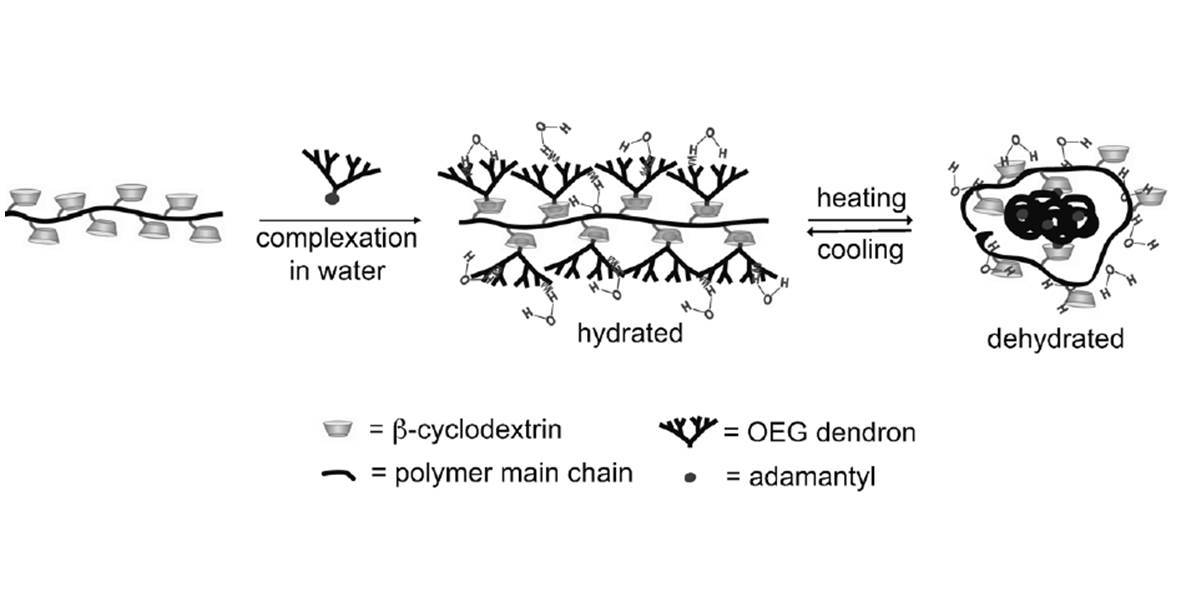Thermoresponsive Supramolecular Dendronized Polymers
Abstract
Combining the concepts of supramolecular polymers and dendronized polymers provides the opportunity to create bulky polymers with easy structural modification and tunable properties. In the present work, a novel class of side-chain supramolecular dendronized polymethacrylates is prepared through the host–guest interaction. The host is a linear polymethacrylate (as the backbone) attached in each repeat unit with a β-cyclodextrin (β-CD) moiety, and the guest is constituted with three-fold branched oligoethylene glycol (OEG)-based first- (G1) and second-generation (G2) dendrons with an adamantyl group core. The host and guest interaction in aqueous solution leads to the formation of the supramolecular polymers, which is supported with 1H NMR spectroscopy and dynamic light scattering measurements. The supramolecular formation was also examined at different host/guest ratios. The water solubility of hosts and guests increases upon supramolecular formation. The supramolecular polymers show good solubility in water at room temperature, but exhibit thermoresponsive behavior at elevated temperatures. Their thermoresponsiveness is thus investigated with UV/Vis and 1H NMR spectroscopy, and compared with their counterparts formed from individual β-CD and the OEG dendritic guest. The effect of polymer concentration and molar ratio of host/guest was examined. It is found that the polar interior of the supramolecules contribute significantly to the thermally-induced phase transitions for the G1 polymer, but this effect is negligible for the G2 polymer. Based on the temperature-varied proton NMR spectra, it is found that the host–guest complex starts to decompose during the aggregation process upon heating to its dehydration temperature, and this decomposition is enhanced with an increase of solution temperature.

<<全文链接>>

